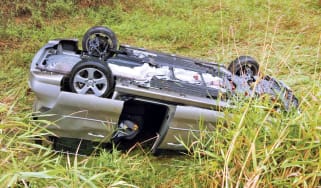Adding value
We look at some of the jobs you can do to maximise your car’s sale price
It’s no secret that a clean car will sell faster than a dirty one. But if you think preparing a vehicle for sale requires no more than a bucket and sponge, it might be time to join our master class!
The proper pre-sale preparation of vehicles is an art in itself. It’s about peeling back the years of grime that inevitably gather, as well as fixing the smaller faults which can make an otherwise well maintained car look tired and neglected.
It makes no difference whether you’re offering your model to a bargain-hungry private buyer or trading it in at a picky dealer. By systematically tackling dents, bumper scuffs, dull paintwork and scruffy interiors, you’ll not only sell it faster, you are likely to get more money, too. Here we look at some of the most important jobs to do.
With long waiting times at bodyshops, and the inconvenience of being without your car while work is carried out, it’s easy to see why most owners don’t bother with tidy-up work before they sell. However, SMART repairs (it’s short for small to medium area repair techniques) are a simple, convenient and usually far cheaper way of tackling localised problems than having whole panels resprayed. What’s more, most fixes can be done in half a day on your driveway.
The big question, though, is whether the work is worth the outlay. According to Phil Newstead, from Warwickshire-based mobile operator Dent Wizard, that depends on the car being sold.
“People expect a three-year-old for sale privately to look just as good as a car at a dealership, and if it doesn’t, they go and find a better example elsewhere or offer a low price,” he explained. “Lots of vendors put their nearly new vehicles up for sale without any preparation, and lose hundreds of pounds as a result.”
In fact, it’s cars which are only a couple of years old which can benefit most from SMART repairs. On an older model with 100,000-plus miles, spending lots of money simply doesn’t pay; there’s a cut-off point for every vehicle.
“From my experience of preparing cars prior to auction, a vendor gets £1.50 back for every £1 they spend on repairs,” said Phil. “So, instead of looking at the cost, see it as investing in a vehicle’s presentation to get the best return.”
Of course, there are many ways to improve a car’s appearance. But here, we list the ‘must-do’ jobs in order of priority to achieve the best price.
Click on the images to see how much each job influences your car's sale price.
Business sense
For motorists using company cars or tied to personal contract plans, the final checks when returning the vehicle can be financially painful.
Fleet operators don’t charge users for general wear and tear, but enforce a penalty for any scuffs and other minor damage. Inspection standards are tight, so having SMART repairs carried out in advance is often cost effective.
David Mercer, from Manheim Auctions, said: “If a company driver shells out £116 on SMART repairs, when the car is ‘defleeted’ and sent to auction, it will make £160-£200 more on average – which is good news for the fleet companies.”
Find a car with the experts







